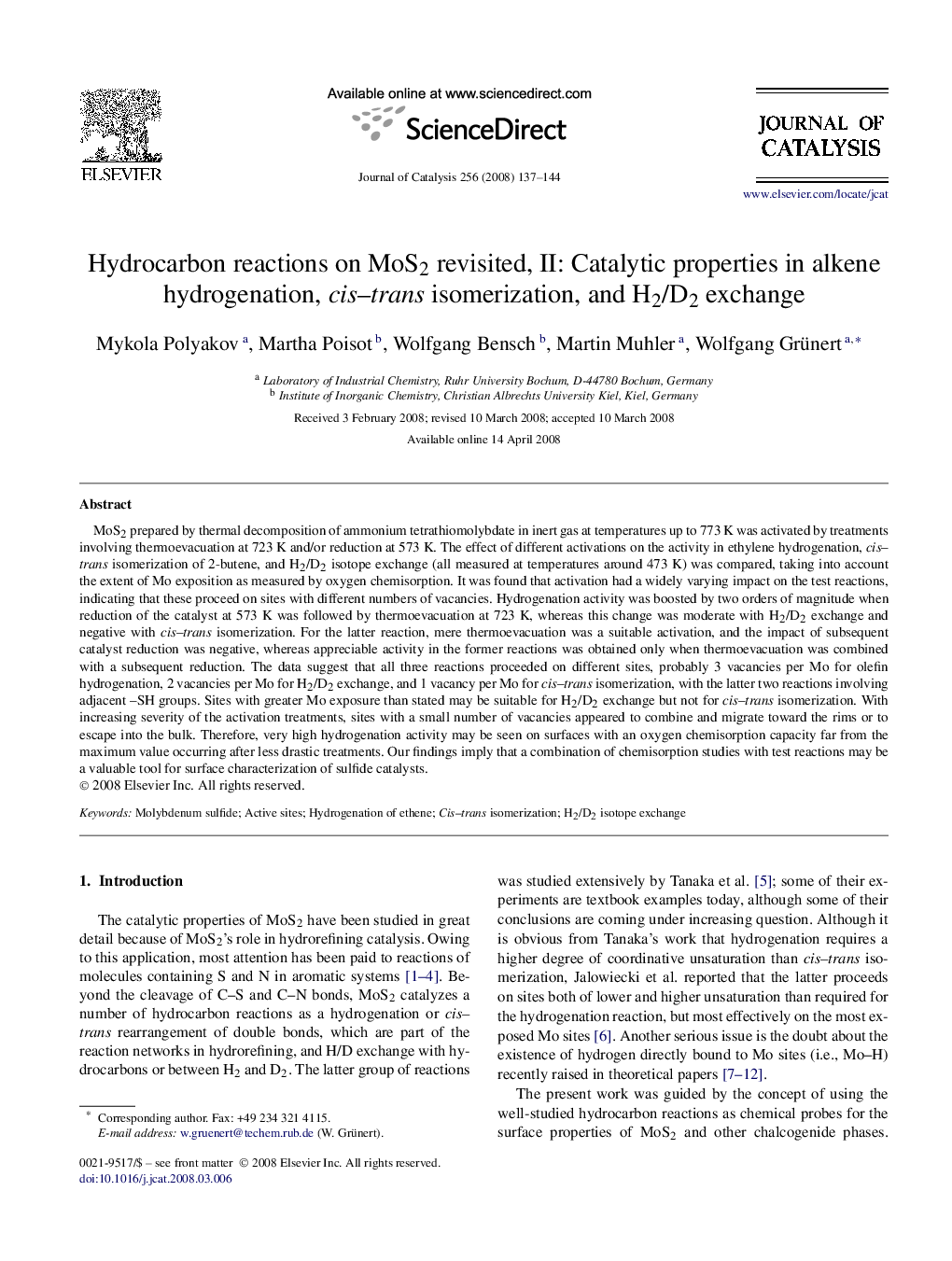| کد مقاله | کد نشریه | سال انتشار | مقاله انگلیسی | نسخه تمام متن |
|---|---|---|---|---|
| 62725 | 47652 | 2008 | 8 صفحه PDF | دانلود رایگان |

MoS2 prepared by thermal decomposition of ammonium tetrathiomolybdate in inert gas at temperatures up to 773 K was activated by treatments involving thermoevacuation at 723 K and/or reduction at 573 K. The effect of different activations on the activity in ethylene hydrogenation, cis–trans isomerization of 2-butene, and H2/D2 isotope exchange (all measured at temperatures around 473 K) was compared, taking into account the extent of Mo exposition as measured by oxygen chemisorption. It was found that activation had a widely varying impact on the test reactions, indicating that these proceed on sites with different numbers of vacancies. Hydrogenation activity was boosted by two orders of magnitude when reduction of the catalyst at 573 K was followed by thermoevacuation at 723 K, whereas this change was moderate with H2/D2 exchange and negative with cis–trans isomerization. For the latter reaction, mere thermoevacuation was a suitable activation, and the impact of subsequent catalyst reduction was negative, whereas appreciable activity in the former reactions was obtained only when thermoevacuation was combined with a subsequent reduction. The data suggest that all three reactions proceeded on different sites, probably 3 vacancies per Mo for olefin hydrogenation, 2 vacancies per Mo for H2/D2 exchange, and 1 vacancy per Mo for cis–trans isomerization, with the latter two reactions involving adjacent SH groups. Sites with greater Mo exposure than stated may be suitable for H2/D2 exchange but not for cis–trans isomerization. With increasing severity of the activation treatments, sites with a small number of vacancies appeared to combine and migrate toward the rims or to escape into the bulk. Therefore, very high hydrogenation activity may be seen on surfaces with an oxygen chemisorption capacity far from the maximum value occurring after less drastic treatments. Our findings imply that a combination of chemisorption studies with test reactions may be a valuable tool for surface characterization of sulfide catalysts.
Journal: Journal of Catalysis - Volume 256, Issue 1, 15 May 2008, Pages 137–144